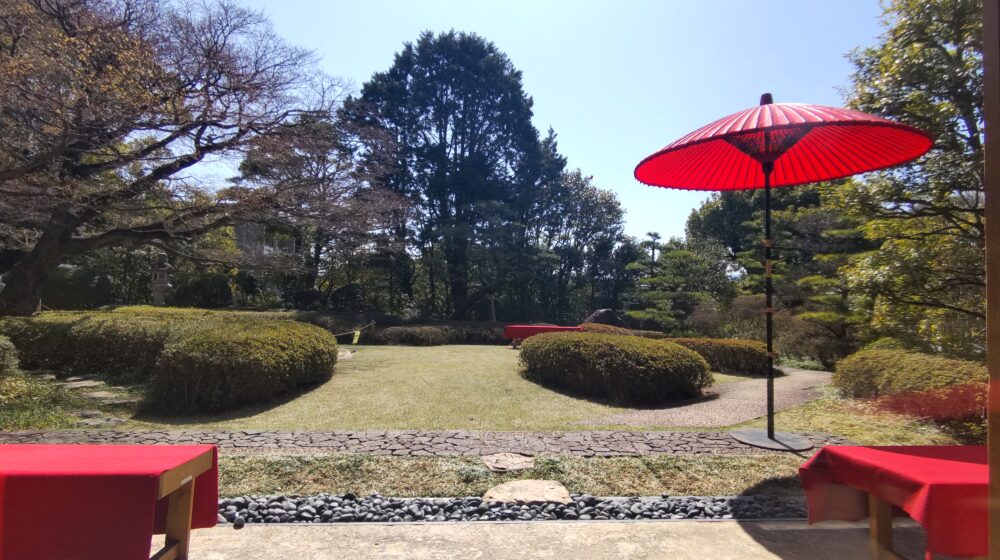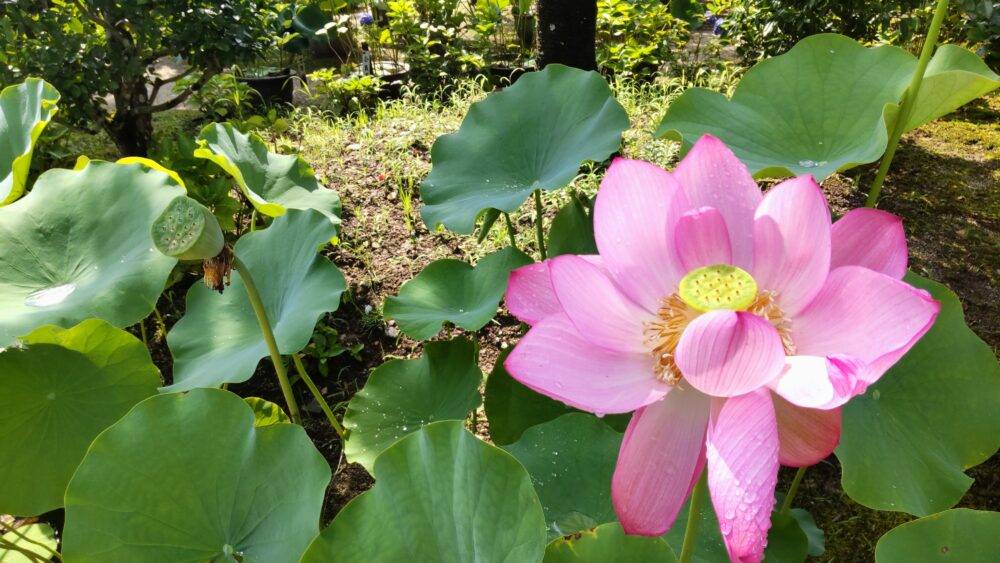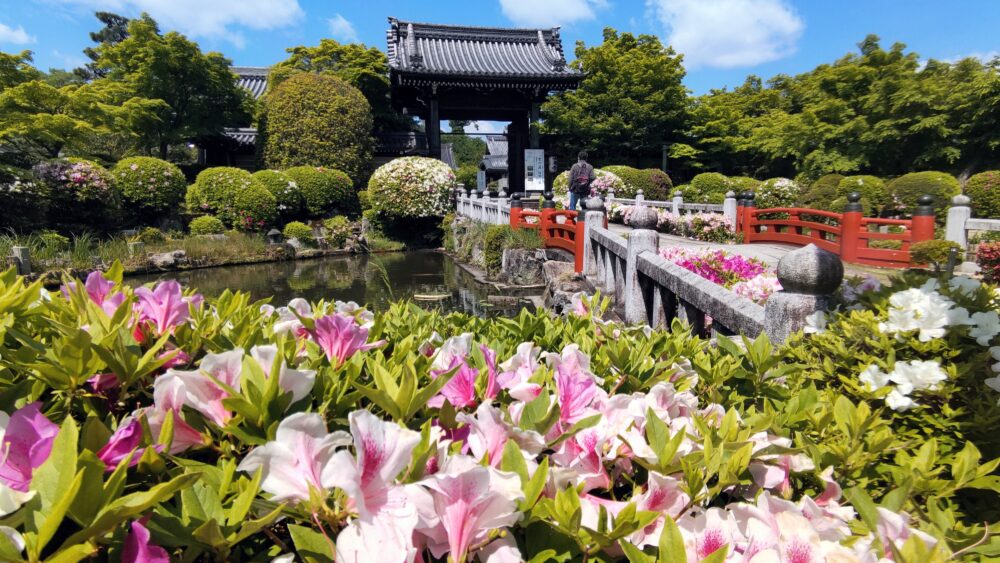3 Types of Japanese Garden Design : the first step to understanding
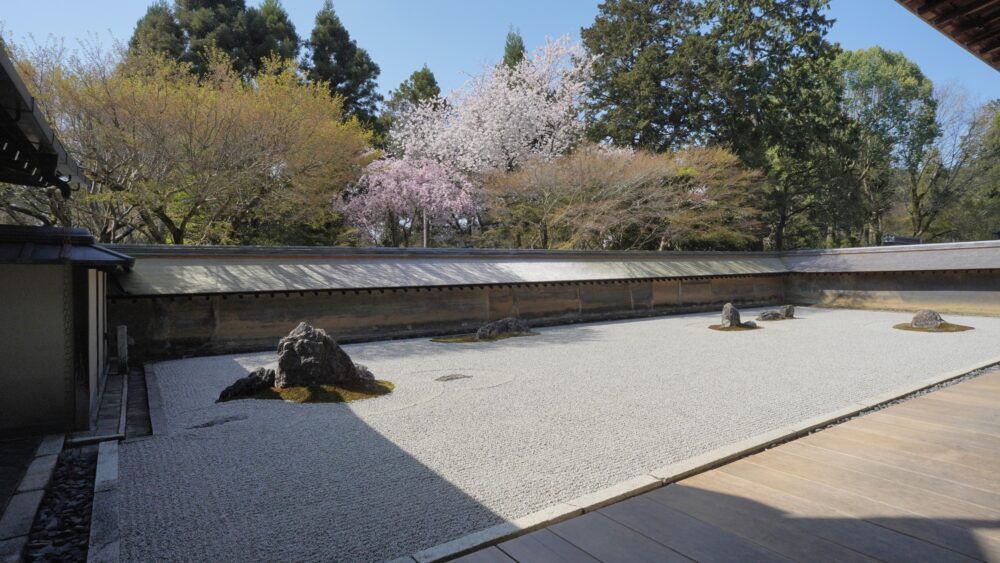
Japanese gardens are not only found in Japan but also overseas, where they have become popular tourist destinations. These gardens are regarded as a form of high visual art, embodying profound symbolism, spirituality, and harmony with nature.
The design of Japanese gardens, initially inspired by Chinese and Korean gardens, began to spread during the Asuka period (6th to 7th century). Over a long history, they have evolved into various forms, influenced by different purposes and owners. While there are many types of Japanese gardens, I will introduce you to three basic types of Japanese garden design that are essential for beginners to know.
1.Japanese pond garden
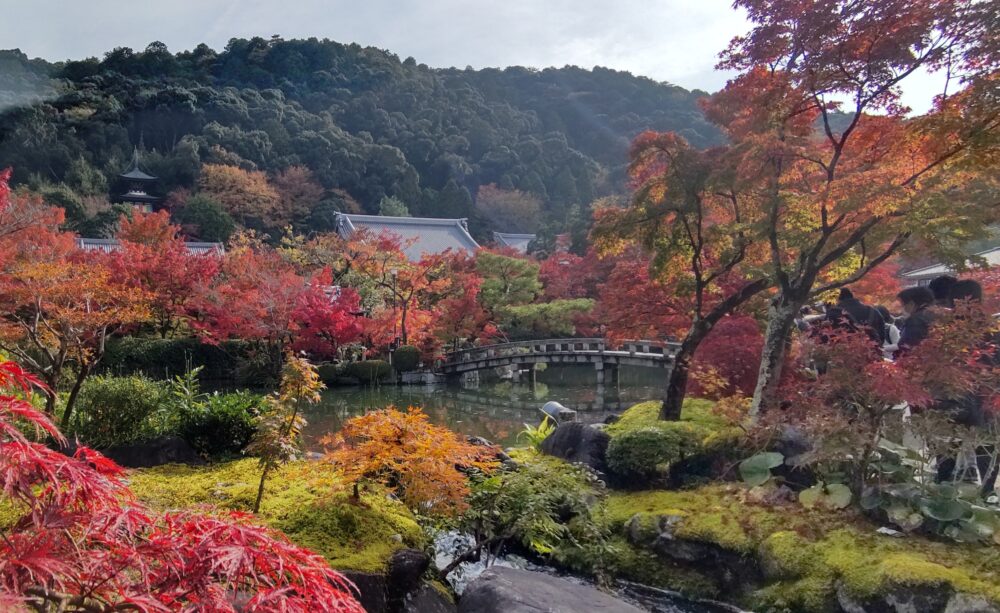
The Japanese pond gardens, known as “Tisen teien” in Japanese, are a traditional type of garden featuring a central pond and winding rivers as focal points. These gardens were originally created for the enjoyment and appreciation of the nobility, including emperors, shoguns, and aristocrats.
Japanese pond gardens are composed of a combination of natural elements such as rocks, islets, plants, and trees. The arrangement of these elements creates a harmonious and picturesque landscape that mirrors the beauty of nature.
In particular, these gardens boast a plethora of trees that change their appearance with each season. In spring, beautiful trees bloom, and in fall, they exhibit vibrant autumn foliage, attracting travelers. Eikando in Zenrin-ji, located in eastern Kyoto, is renowned for its stunning autumn scenery, where approximately 3,000 Japanese maple trees transform into bright shades of yellow and red.
On the other hand, evergreen trees are often used as hedges and background foliage. One of the most famous examples is the hedge at Ginkaku-ji(Silver pavilion) meticulously trimmed and maintained. This hedge is made from a mix of Japanese camellia and oak, exemplifying the careful attention to detail in these serene landscapes.
some symbols Influenced by religion
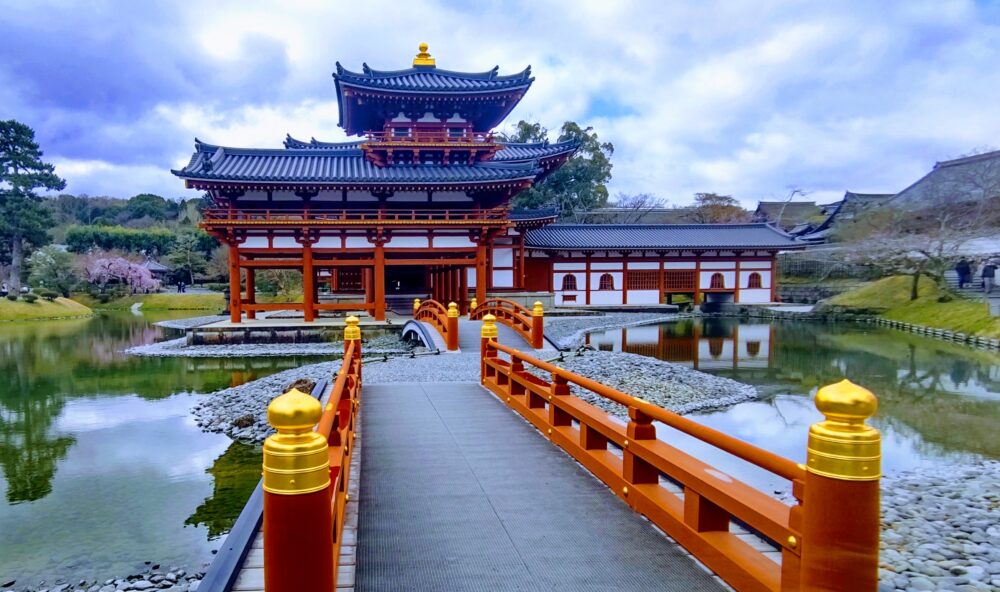
In some cases, Japanese pond gardens have religious significance. The Jodo, or Pure Land garden, reflects the principles and beliefs of Jodo Buddhism, representing the Pure Land. These gardens are designed to evoke a sense of tranquility, purity, and spiritual contemplation.
Byodoin Temple, located in southern Kyoto, is famous for its Jodo-style garden. Here, the Amitabha Buddha hall is situated on the east side, facing visitors on the west side across the pond. This arrangement symbolizes the belief in Jodo Shinshu Buddhism that Amitabha Tathagata resides in the Pure Land, which is thought to be in the far west. The garden also features pebble beaches and two types of bridges – flat and arched – enhancing its serene and contemplative atmosphere.
2. Japanese dry garden

The Japanese dry gardens, known as “Karesansui” in Japanese, were developed in Zen temples during the Muromachi period (14th to 16th century), where Zen Buddhist monks practiced. These gardens are seen as a manifestation of Zen philosophy, emphasizing rigorous self-restraint, meditation practice, and insight into the nature of the mind.
The primary elements of these gardens are sand, fine gravel, and arranged rocks, symbolizing water waves and the force of waves crashing onto the shore. Only evergreen trees, such as pine trees and sheared azaleas (trimmed to remove flowers), along with moss, are used because blooming trees that drop flowers and leaves would disrupt the pattern of the sand ripples.
One of the most famous examples of a Japanese dry garden is Ryoanji Temple, located in the northwest of Kyoto city. The main garden, approximately 300 square meters (about 358 square yards), is composed of black gravel, white sand, 15 arranged rocks, and green moss. It is renowned for its simplicity and elegance.
The modern Japanese dry garden
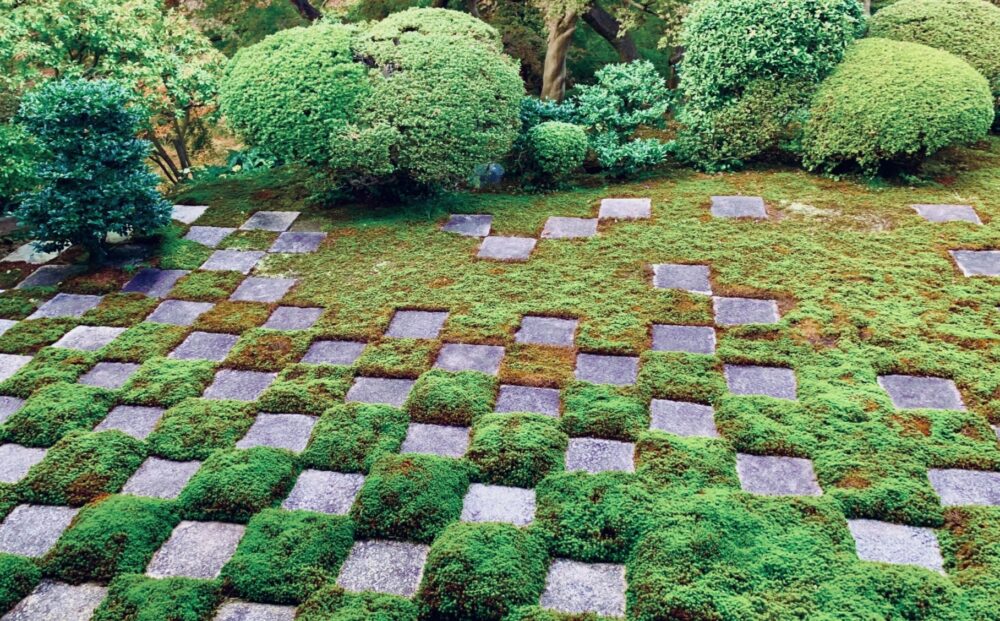
Modern Japanese dry gardens incorporate elements and design principles from various cultures, particularly blending aspects of traditional Japanese dry gardens with English gardens. As a result, modern versions tend to feature more abstract and conceptual designs.
Tofukuji Temple, located in the center of Kyoto, is home to a modern Japanese dry garden known as “Hassou-no-Niwa” in Japanese. This garden was designed by Mirei Shigemori, a prominent Japanese landscape architect and garden designer. Hassou-No-Niwa showcases eight characteristics, symbolizing the teachings shown by the Buddha to save people. One of the most notable features of this garden is its checkered pattern, a design commonly used in various forms of Japanese art. Although Japanese gardens traditionally represent natural beauty, this garden stands out with its unique features and geometric design.
3. Japanese teahouse garden
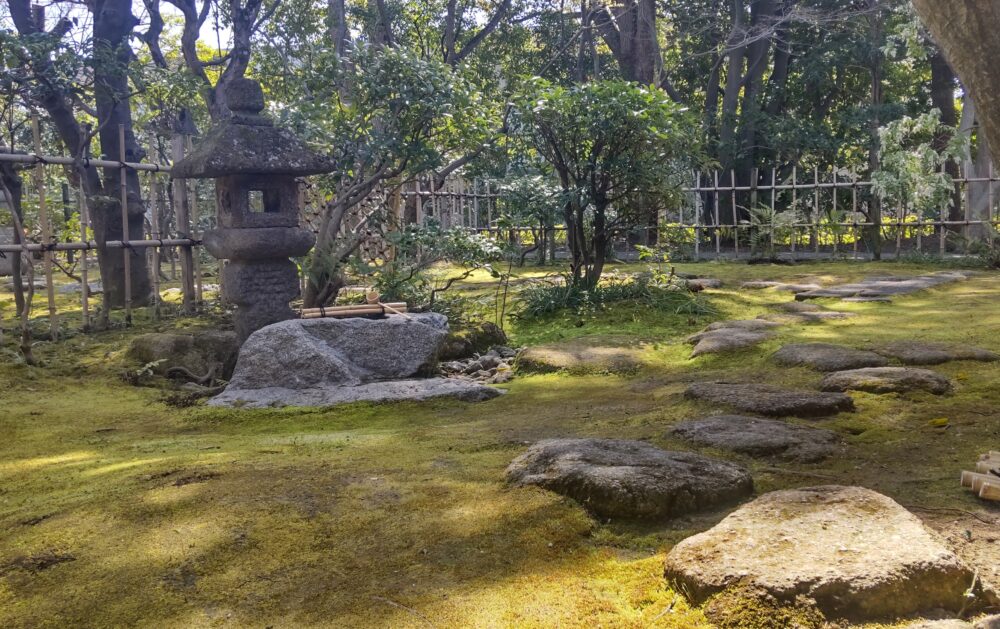
The Japanese teahouse gardens, known as “Roji” in Japanese, developed alongside tea houses to complement and enhance the tea ceremony experience since the Momoyama period (16th century). These gardens represent serene mountainous landscapes, typically featuring only evergreen trees, ferns, and moss to maintain focus on the ceremony, deliberately avoiding vibrant flowering trees.
For the steps involved in the tea ceremony, natural ornaments are used, such as stone basins where guests wash their hands and garden benches where they wait until the tea ceremony begins. Recently, these ideas have been incorporated into Japanese residential design.
Casually accessible teahouse and garden
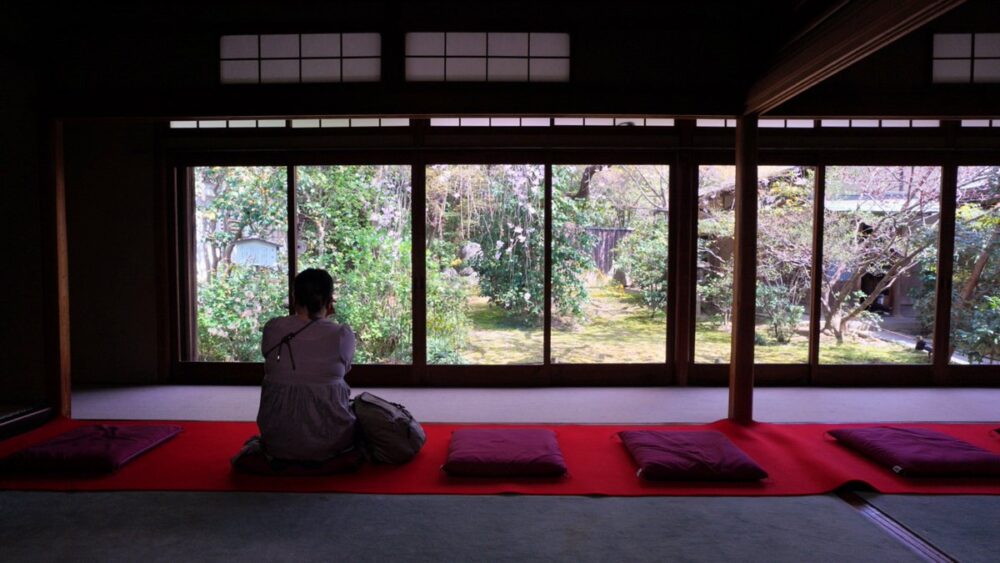
A casually accessible teahouse and garden allow visitors to enter and experience the setting without participating in a formal tea ceremony. These teahouses and gardens provide a space for visitors to enjoy green tea and appreciate the authentic surrounding garden.
A Myoshin-ji in Taizoin Temple, located in western Kyoto, features a teahouse and garden. The teahouse is designed with traditional elements: tatami mats, a low table, and a red felt carpet. Visitors can enjoy a moment of tranquility, sipping green tea with Japanese sweets while admiring the elegant teahouse garden.
